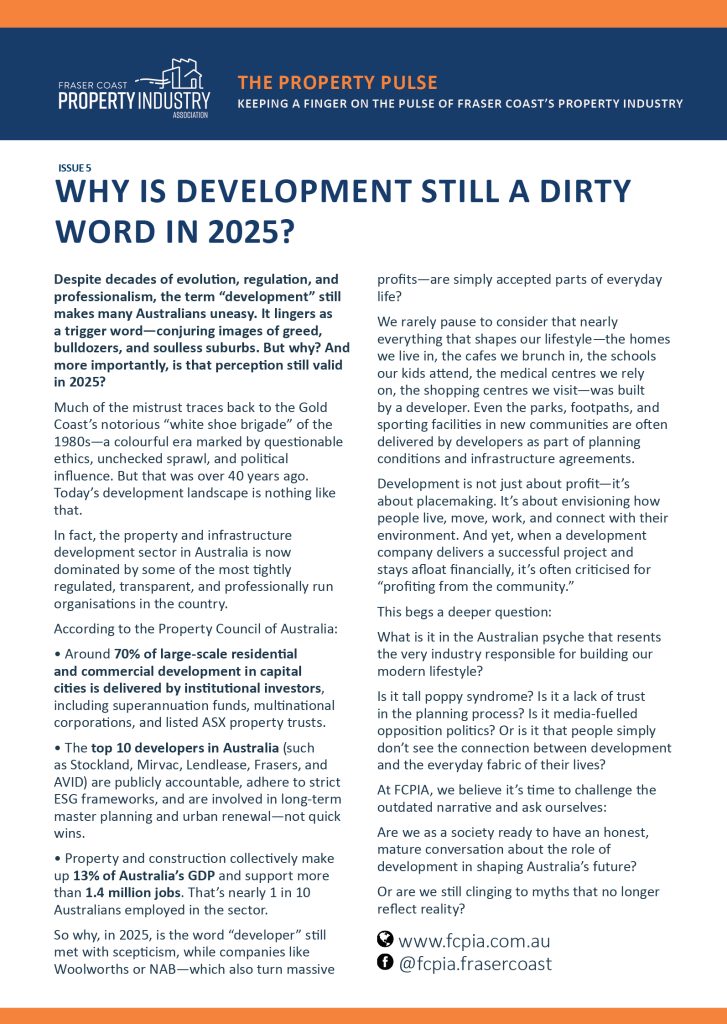Despite decades of evolution, regulation, and professionalism, the term “development” still makes many Australians uneasy. It lingers as a trigger word—conjuring images of greed, bulldozers, and soulless suburbs. But why? And more importantly, is that perception still valid in 2025?
Much of the mistrust traces back to the Gold Coast’s notorious “white shoe brigade” of the 1980s—a colourful era marked by questionable ethics, unchecked sprawl, and political influence. But that was over 40 years ago. Today’s development landscape is nothing like that.
In fact, the property and infrastructure development sector in Australia is now dominated by some of the most tightly regulated, transparent, and professionally run organisations in the country.
According to the Property Council of Australia:
- Around 70% of large-scale residential and commercial development in capital cities is delivered by institutional investors, including superannuation funds, multinational corporations, and listed ASX property trusts.
- The top 10 developers in Australia (such as Stockland, Mirvac, Lendlease, Frasers, and AVID) are publicly accountable, adhere to strict ESG frameworks, and are involved in long-term master planning and urban renewal—not quick wins.
- Property and construction collectively make up 13% of Australia’s GDP and support more than 1.4 million jobs. That’s nearly 1 in 10 Australians employed in the sector.
So why, in 2025, is the word “developer” still met with scepticism, while companies like Woolworths or NAB—which also turn massive profits—are simply accepted parts of everyday life?
We rarely pause to consider that nearly everything that shapes our lifestyle—the homes we live in, the cafes we brunch in, the schools our kids attend, the medical centres we rely on, the shopping centres we visit—was built by a developer. Even the parks, footpaths, and sporting facilities in new communities are often delivered by developers as part of planning conditions and infrastructure agreements.
Development is not just about profit—it’s about placemaking. It’s about envisioning how people live, move, work, and connect with their environment. And yet, when a development company delivers a successful project and stays afloat financially, it’s often criticised for “profiting from the community.”
This begs a deeper question:
What is it in the Australian psyche that resents the very industry responsible for building our modern lifestyle?
Is it tall poppy syndrome? Is it a lack of trust in the planning process? Is it media-fuelled opposition politics? Or is it that people simply don’t see the connection between development and the everyday fabric of their lives?
At FCPIA, we believe it’s time to challenge the outdated narrative and ask ourselves:
Are we as a society ready to have an honest, mature conversation about the role of development in shaping Australia’s future?
Or are we still clinging to myths that no longer reflect reality?

